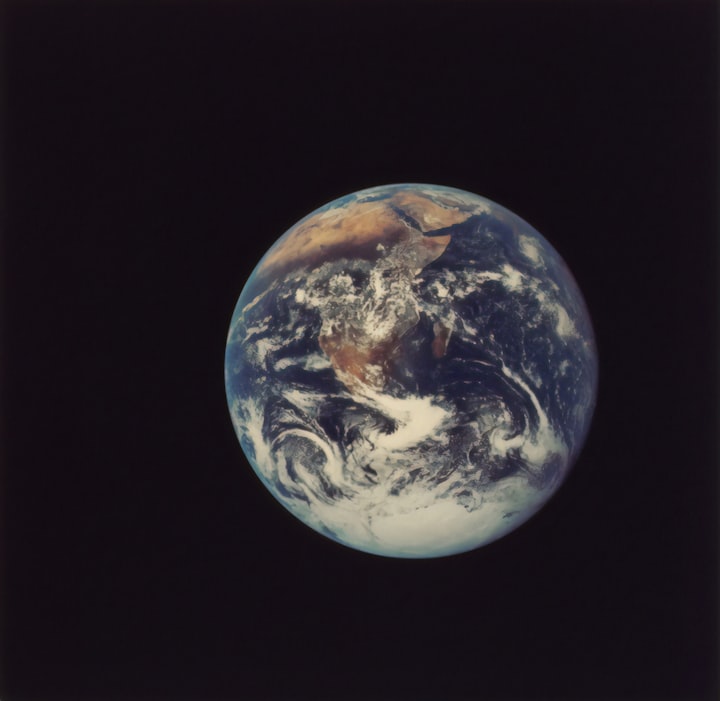"Melting Horizons: Unveiling the Impact of Global Ice Disappearance"
Exploring Hypothetical Scenarios and the Global Implications of Ice Dissolution

What if a sudden, dramatic surge of climate change melted all of the Earth's ice overnight? Would you wake up to find yourself drowning underwater? Would most of your country be submerged? How would you cope with the slow agony of choking to death? This is the hypothetical scenario explored in the following narrative.
Consider the simple act of watching an ice cube melt in a glass of water filled to the brim. How does it affect the water level? Surprisingly, it doesn't. Whether above or below the water line, a melted ice cube displaces exactly the same volume of water it originally occupied. Now, let's introduce salt into the equation. If we were to examine a 1 cubic inch ice cube melting in the glass, the water level would rise by a mere 0.03 cubic inches. This rise, though small, demonstrates the principle of displaced saltwater—a slight increase in volume of nearly three percent. But what if we scale this phenomenon up to encompass the vast expanses of glaciers and floating sea ice?
Currently, about 5.8 million square miles of our planet are blanketed with ice. If, hypothetically, all of this ice were to melt overnight, the global sea level would rise approximately 230 feet. Such a rise would be catastrophic. Iconic landmarks like London's Tower Bridge would be submerged, and all seven continents would find themselves partially underwater. Major cities like Miami and London would disappear beneath the waves, and coastal regions worldwide would face inundation. In places like Australia, where much of the population resides near the coast, the consequences would be particularly devastating. Up to eighty percent of its residents could find themselves displaced by rising seas. Likewise, cities built on low-lying lands, such as Venice and the Netherlands, would vanish beneath the encroaching waters.
But what about the broader implications beyond the immediate flooding? The extreme heatwaves following such an event would render large swathes of continents uninhabitable. While Africa might fare better initially, its ecosystems and agriculture would still face significant challenges. The resulting disruptions in weather patterns would lead to erratic rainfall, alternating between devastating floods and crippling droughts. Agriculture, the backbone of human civilization, would suffer immensely, potentially sparking a global famine.
Moreover, the release of carbon dioxide trapped within the ice would further exacerbate the situation. As the ice melts, it would release large amounts of this greenhouse gas into the atmosphere. With oxygen levels remaining constant, the elevated CO2 concentration would gradually poison the air. Breathing would become increasingly difficult, and the risk of asphyxiation would loom large.
The consequences would extend far beyond humanity. Ocean currents, essential for regulating global climate patterns, would undergo drastic shifts. This would disrupt marine ecosystems, leading to mass extinctions among sea creatures and polar animals. Species that survive would be forced to abandon their natural habitats in search of more hospitable environments, further destabilizing ecosystems worldwide.
Furthermore, changes in wind patterns would trigger a cascade of secondary effects. With diminished ice cover to reflect sunlight, more moisture would be drawn from the oceans, leading to increased cloud formation. These clouds, initially gathering near mountain ranges, would eventually release torrential rainfall, causing widespread flooding and landslides. Oceanic hurricanes, fueled by warmer waters, would become more frequent and destructive, battering coastlines and causing further devastation.
In the face of such cataclysmic events, humanity would be forced to confront a global crisis of unparalleled magnitude. Governments would struggle to manage the resulting mass migrations and humanitarian crises, leading to widespread social and political instability. The world, as we know it, would teeter on the brink of collapse.
Fortunately, this apocalyptic scenario remains purely hypothetical—for now. However, the reality of climate change is no less dire. Even as we speak, the Earth's ice continues to melt at an alarming rate. The consequences may not be as immediate or catastrophic as those described here, but they are no less real. If we fail to take decisive action to mitigate climate change, we risk sleepwalking into a future where such scenarios become all too real. It's up to us to act now, before it's too late.
About the Creator
T. J. Prakruthi
I am a student from B. Tech exploring and researching the things online and posting the content in an organized way. Start reading these articles and lets us together gain virtual experience, because Imagination is more powerful.





Comments (1)
a beautiful piece there